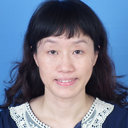Anti-atherosclerotic activities of flavonoids from the flowers of Helichrysum arenarium L. MOENCH through the pathway of anti-inflammation.
Paraules clau
Resum
We have successfully established AS model using thoracic aortas vascular ring which evaluated by the morphological changes of blood vessels, the proliferation of VSMC, and the expression of inflammation factors VEGF, CRP, JNK2 and p38. This AS model has the advantages of low cost, convenient and short period of established time. Moreover, we investigated the anti-AS activities of 7 flavonoids Narirutin (1), Naringin (2), Eriodictyol (3), Luteolin (4), Galuteolin (5), Astragalin (6), Kaempferol (7) from flowers of Helichrysum arenarium L. MOENCH by examining the vascular morphology, the inhibition on the expression of inflammation factors CRP, VEGF, JNK2, p38. In addition, we investigated the anti-AS activities of these 7 flavonoids by examining NO secretion of RAW264.7 cells in response to LPS. All above inflammation factors have been proved to be involved in the formation of AS. After comprehensive analysis of all results to discuss the structure-activity relationship, we summarized the conclusions at follow: compounds 1-7 could inhibit the expression of VEGF, CRP, JNK2, p38 and NO at different level, and we evaluated that flavonol aglycone have more significant anti-inflammation than it's glycoside, and the anti-AS activity of flavonols were stronger than flavanones and flavones, which means that 3-group might be the effective group. Eventually, we supposed the main anti-inflammatory mechanism of these compounds was to reduce the expression of CRP, inhibit the kinases activity of JNK2 and p38, and then the MAPK pathway was suppressed, which resulted in the decrease of NO synthesis, VEGF expression and endothelial adhesion factor expression. And eventually, the scar tissue and vascular stenosis formations were prevented. This conclusion suggested flavonoids have the potential of preventing AS formation.



